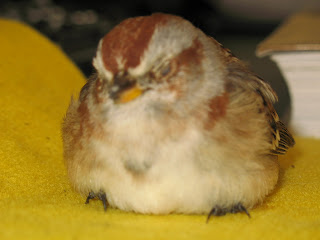“The first time I came to Beczak, over twenty years ago, none of this was here,” singer/songwriter/captain Rick Nestler told me, referring to Beczak’s interpretive center and thick green tidal marsh.
I called Rick Nestler to chat about his famous song “The River that Flows Both Ways” because on October 25 he will be playing it at Beczak as part of
River Songs, a jam session featuring dozens of musicians performing original songs about the Hudson.
Our conversation touched on events thirty years past and showed me how Beczak Environmental Education Center is part of the Hudson River’s activist heritage, a cousin to legendary river organizations like Clearwater and Ferry Sloops and connected to Hudson River troubadours Pete Seeger and Rick Nestler.
Here’s how. Back in the 60’s when the Hudson River was very polluted and dirty, folk singer Pete Seeger had an inspiration—if people sailed on the river, they would be moved to help clean it up. After much hard work the Hudson River sloop Clearwater was built and it sailed up and down the Hudson helping to spread the word of the environmental movement. The next step, Pete and others thought, was to build smaller boats that would sail out of other river communities. The Woody Guthrie was built for Pete (eventually donated to the Beacon Sloop Club) and the new group called Ferry Sloops in Yonkers tackled building the Sojourner Truth. This was in the 1980s and it involved people like Bob Walters, Joe Beczak, Rick Nestler and others. It was finally finished and sailed, but it took 5 years! After that the energy of Yonkers’ Ferry Sloops became Beczak Environmental Education Center.
“But back to ‘The River That Flows Both Ways,’” Rick Nestler continued, “While we were building the Sojourner Truth, I helped Pete Seeger sail the Woodie Guthrie to Troy. He told a crowd there, ‘I could be happy just sailing my little boat back and forth across the Hudson River.’ And that was the inspiration for ‘The River that Flows Both Ways.’”
Dom Pirone of the Hudson River Fishermen calls Rick Nestler “a real Hudson River Troubadour.” Joe Franklin of WOR-TV calls him “the Hudson River Balladeer.” Pete Seeger calls Rick, “the Terror of the River, raffish Rick Nestler.” Come hear him on October 25 in
River Songs: A Celebration of the Hudson.
“The River That Flows Both Ways”
© 1980 Rick Nestler
Once the Sachems told a story
Of a land the Great Spirit blessed
And the people followed the legend
From the great water in the west.
They they stopped where they found
That the fishing was good
The earth it was fertile, Game ran in the wood
[Refrain twice]
And I could be happy just spending my days
On the river that flows both ways.
First came the trappers, then the traders
Their own fortunes for to find
And the valley treated them kindly
So the farmers followed close behind
Then the sloops sailed well laden 'round the batter
With flour from Yonkers, fur from Albany
[Repeat Refrain]
Writers and painters have shown its beauty
In its waters and on the shore
While musicians sing its praises
And keep alive the river's lore
with the sun settin' golden o'er the Palisades
Afternoon ends and the daylight fades
[Repeat Refrain]
Maybe it's the moonshine; maybe it's the starlight
Reflected in Haverstraw Bay
Maybe it's the fog that rolls off the highlands
At the break of a brand new day
But apple cider and pumpkins, strawberries and corn
Make the people of the river glad they've been born.
[Repeat Refrain]









































